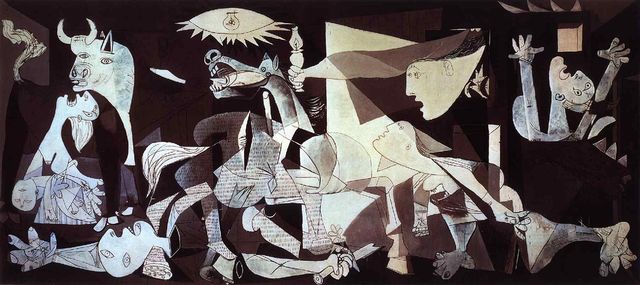

About "Guernica"
Guernica is a large 1937 oil painting on canvas by Spanish artist Pablo Picasso. One of Picasso's best known works, Guernica is regarded by many art critics as one of the most moving and powerful anti-war paintings in history, It is exhibited in the Museo Reina Sofía in Madrid.
The gray, black, and white painting, which is 3.49 meters (11 ft 5 in) tall and 7.76 meters (25 ft 6 in) across, portrays the suffering of people and animals wrenched by violence and chaos. Prominent in the composition are a gored horse, a bull, screaming women, dismemberment, and flames.
Picasso painted Guernica at his home in Paris in response to the bombing of Guernica, a Basque Country town in northern Spain, by Nazi Germany and Fascist Italy at the request of the Spanish Nationalists. Upon completion, Guernica was exhibited at the Spanish display at the 1937 Paris International Exposition and then at other venues around the world. The touring exhibition was used to raise funds for Spanish war relief. The painting soon became famous and widely acclaimed, and it helped bring worldwide attention to the Spanish Civil War.
-
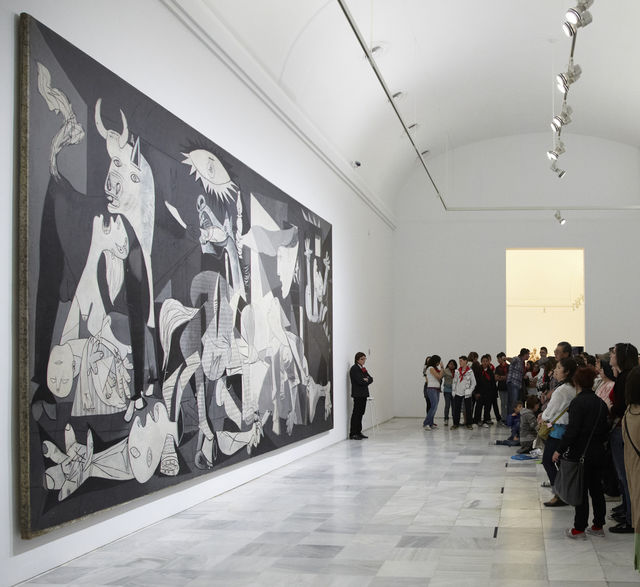
INSTALLATION
Guernica no longer travels and its' permanent home is at the Museo Reina Sofía, in Madrid, Spain
INSTALLATION
Guernica no longer travels and its' permanent home is at the Museo Reina Sofía, in Madrid, Spain
-
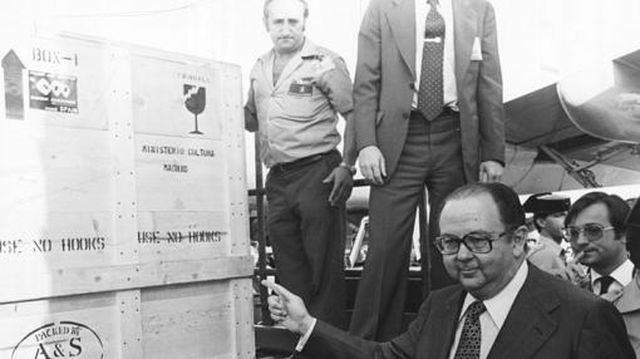
EVENT
1981, Guernica is returned to a Democratic Spain, in accordance with Picasso's wishes.
EVENT
1981, Guernica is returned to a Democratic Spain, in accordance with Picasso's wishes.
-
EVENT
1975, Franco's death puts Spain on the path to being a democracy.
-
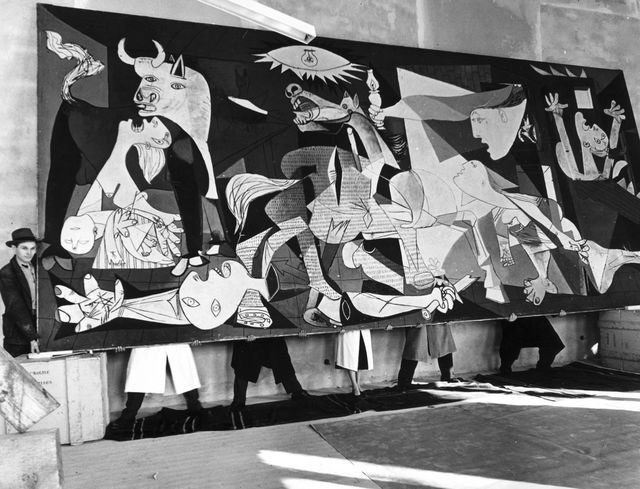
EVENT
1939-1956, Guernica is exhibited across US & Europe, but, after 1956 is kept at MoMA in NY.
EVENT
1939-1956, Guernica is exhibited across US & Europe, but, after 1956 is kept at MoMA in NY.
-
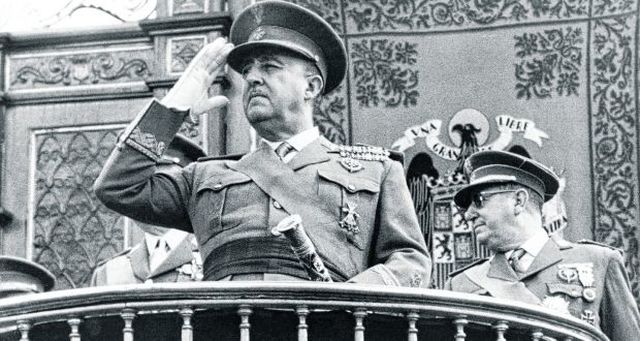
EVENT
1939, the facists win the war; Picasso denies the Dictatorship ownership of Guernica.
EVENT
1939, the facists win the war; Picasso denies the Dictatorship ownership of Guernica.
-
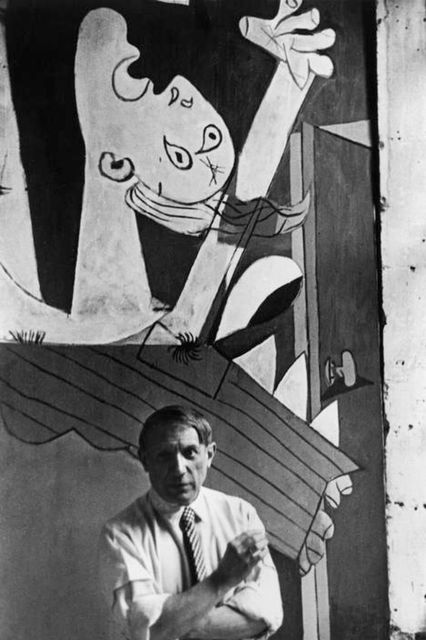
EVENT
1937-39, Guernica tours Europe - to encourage support for the Spanish Republic and grows in fame.
EVENT
1937-39, Guernica tours Europe - to encourage support for the Spanish Republic and grows in fame.
-
EVENT
1937, Guernica is displayed at the Paris fair without drawing much attention.
-
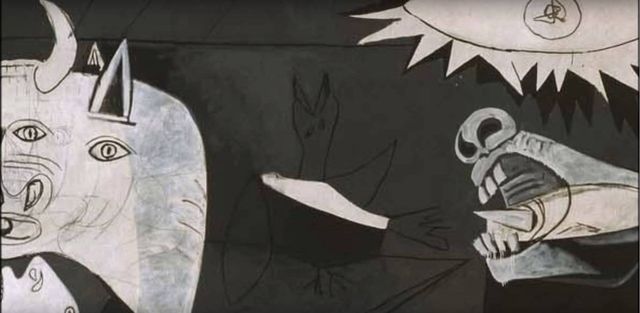
DETAIL
In between the bull and the horse there is third animal, a dove, symbolizing hope, beyond this conflict, for a peaceful future.
DETAIL
In between the bull and the horse there is third animal, a dove, symbolizing hope, beyond this conflict, for a peaceful future.
-
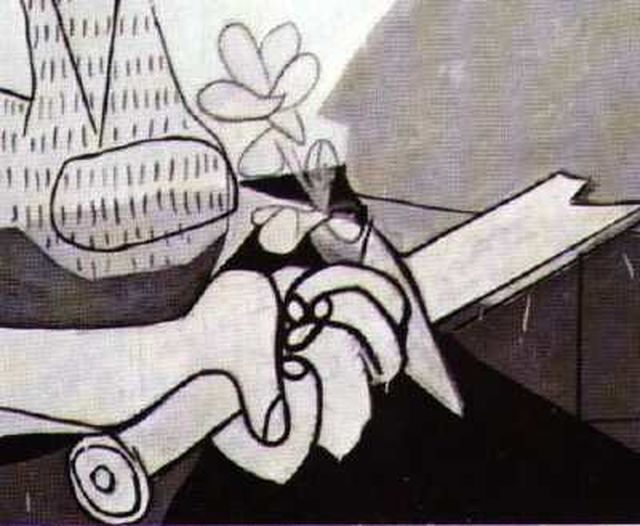
DETAIL
The flower next to the soldier is a poppy, symbolizing regeneration and hope for a better future for the Republic.
DETAIL
The flower next to the soldier is a poppy, symbolizing regeneration and hope for a better future for the Republic.
-
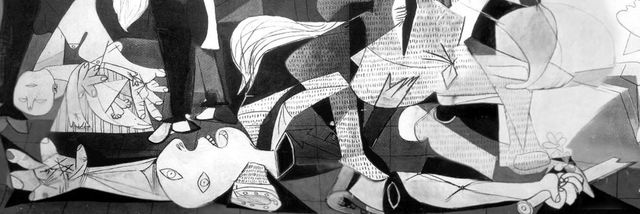
DETAIL
The dead soldier on the ground is dismembered and powerless against the bombs, with a useless broken sword.
DETAIL
The dead soldier on the ground is dismembered and powerless against the bombs, with a useless broken sword.
-
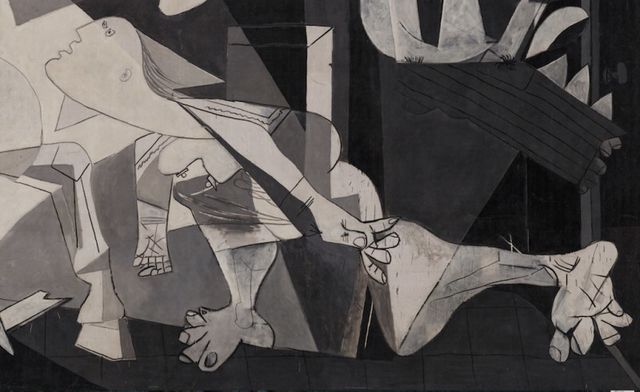
DETAIL
The women to the right holds the wound on her leg, while looking up to and moving towards the lantern.
DETAIL
The women to the right holds the wound on her leg, while looking up to and moving towards the lantern.
-
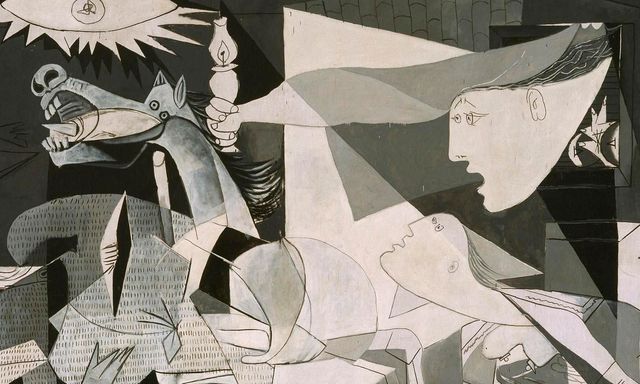
DETAIL
The woman with the oil lamp represents the Spanish Republic. Her lantern lights the scene, providing comfort.
DETAIL
The woman with the oil lamp represents the Spanish Republic. Her lantern lights the scene, providing comfort.
-
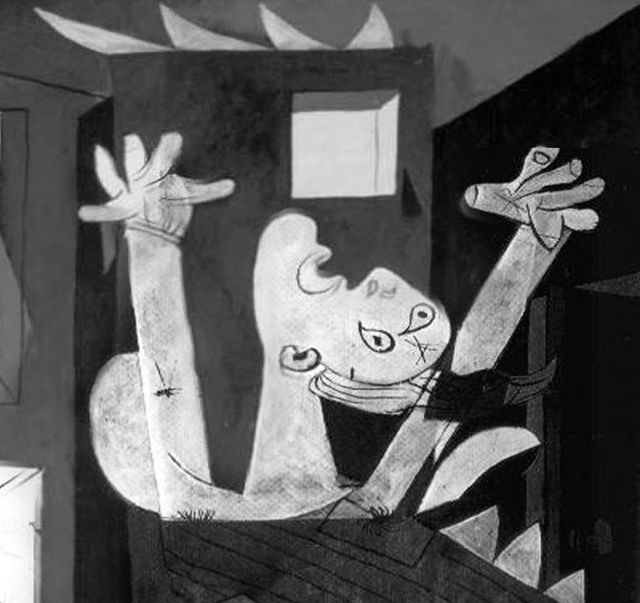
DETAIL
A man pleads, perhaps to god, perhaps to the German Planes to stop. A powerful representation of the anti-war feeling.
DETAIL
A man pleads, perhaps to god, perhaps to the German Planes to stop. A powerful representation of the anti-war feeling.
-
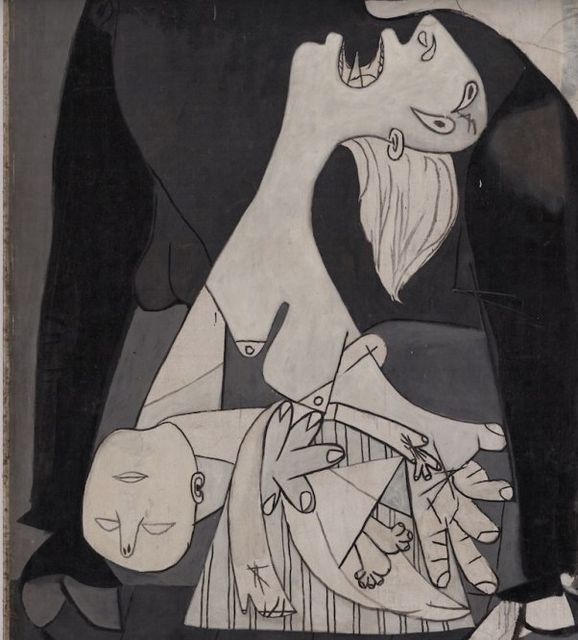
DETAIL
The woman with the dead child, resembles the classic Virgin and child, suggesting a wider crime against God.
DETAIL
The woman with the dead child, resembles the classic Virgin and child, suggesting a wider crime against God.
-
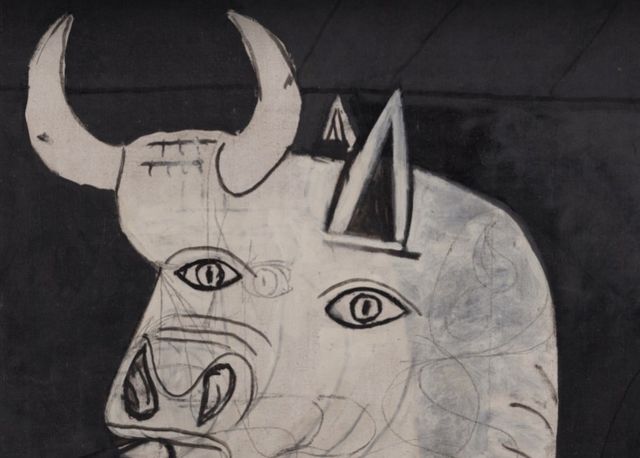
DETAIL
The bulls’ face shows a third erased eye and the effort Picasso put into conveying the emotion he wanted to.
DETAIL
The bulls’ face shows a third erased eye and the effort Picasso put into conveying the emotion he wanted to.
-
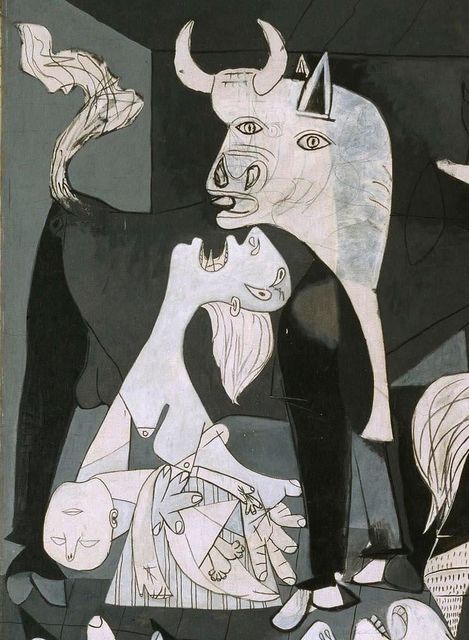
DETAIL
The bull is a symbol of the region, dating back to 200 BC. It's shocked expression shows the outrage of the Spain
DETAIL
The bull is a symbol of the region, dating back to 200 BC. It's shocked expression shows the outrage of the Spain
-
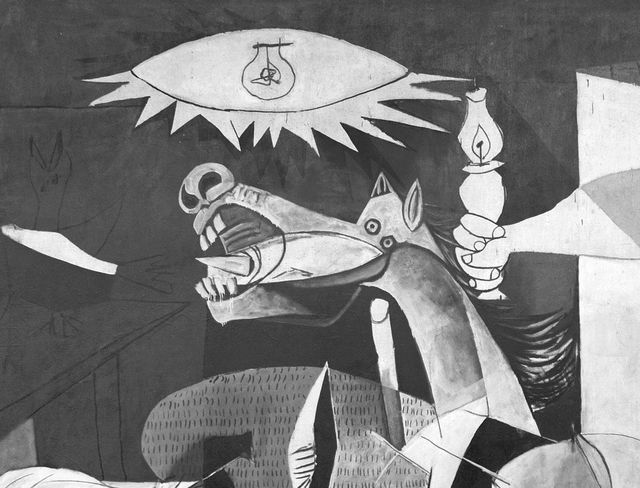
DETAIL
The light bulb above the horse could be God’s eye as he overlooks the madness of war, or a symbol of the bombing itself.
DETAIL
The light bulb above the horse could be God’s eye as he overlooks the madness of war, or a symbol of the bombing itself.
-
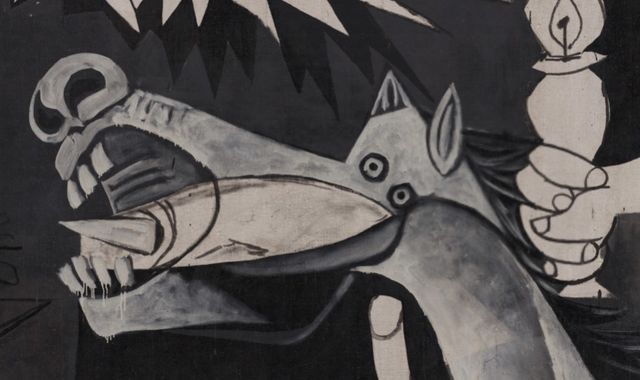
DETAIL
The horse seems mortally wounded, and is screaming in terror. It helps convey the raw horror of war.
DETAIL
The horse seems mortally wounded, and is screaming in terror. It helps convey the raw horror of war.
-
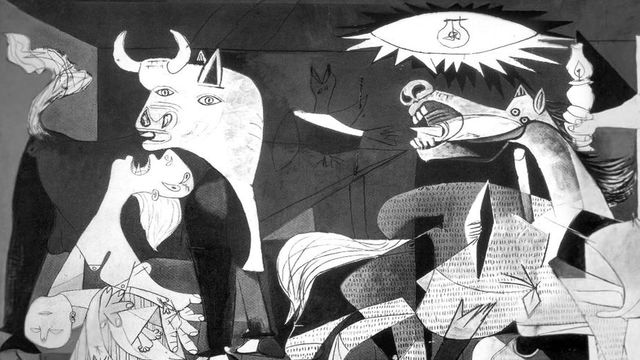
DETAIL
The Bull and the Horse are important motifs of Spain and Picasso used them to demonstrate the wider impact of the bombing.
DETAIL
The Bull and the Horse are important motifs of Spain and Picasso used them to demonstrate the wider impact of the bombing.
-
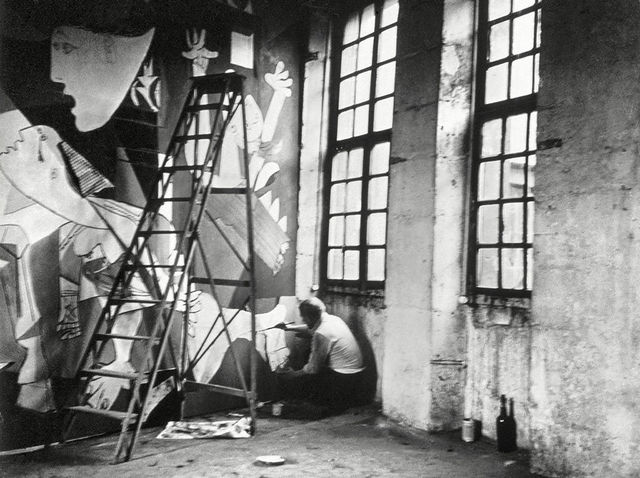
STUDIO
Picasso invites photographers in to document the creation of his masterpiece, which he finishes in 35 days.
STUDIO
Picasso invites photographers in to document the creation of his masterpiece, which he finishes in 35 days.
-
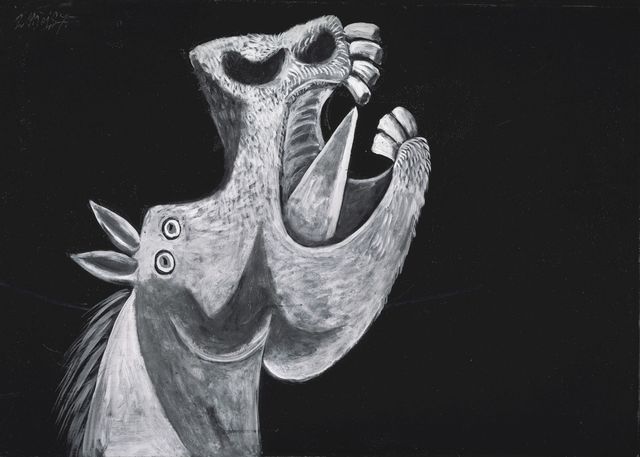
STUDIO
After the bombing, Picasso starts Guernica. Initial sketches of the horse show how he used expressions to communicate the horror
STUDIO
After the bombing, Picasso starts Guernica. Initial sketches of the horse show how he used expressions to communicate the horror
-
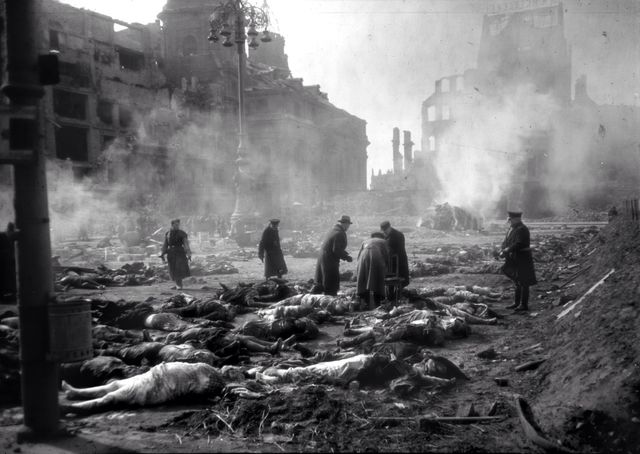
INSPIRATION
On April 26, 1937, Nazi and Spanish Nationalist forces bombed the town of Guernica, targeting civilians.
INSPIRATION
On April 26, 1937, Nazi and Spanish Nationalist forces bombed the town of Guernica, targeting civilians.
-
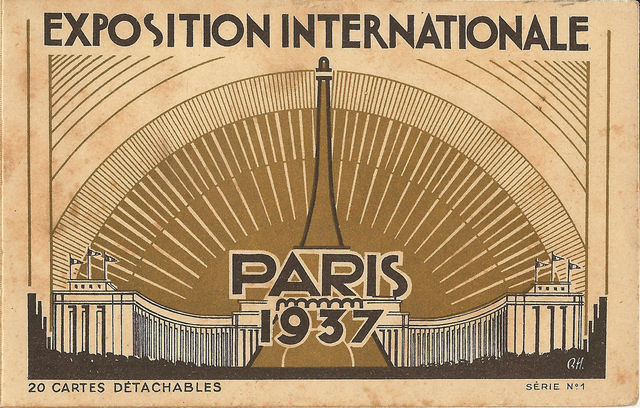
INSPIRATION
In January 1937, the Spanish Republican government commissioned Picasso to create a mural for the 1937 Paris World's Fair.
INSPIRATION
In January 1937, the Spanish Republican government commissioned Picasso to create a mural for the 1937 Paris World's Fair.
-
GUERNICA
Oil on Canvas
Pablo Picasso
-
VERSION2
Oil on Canvas
Pablo Picasso























